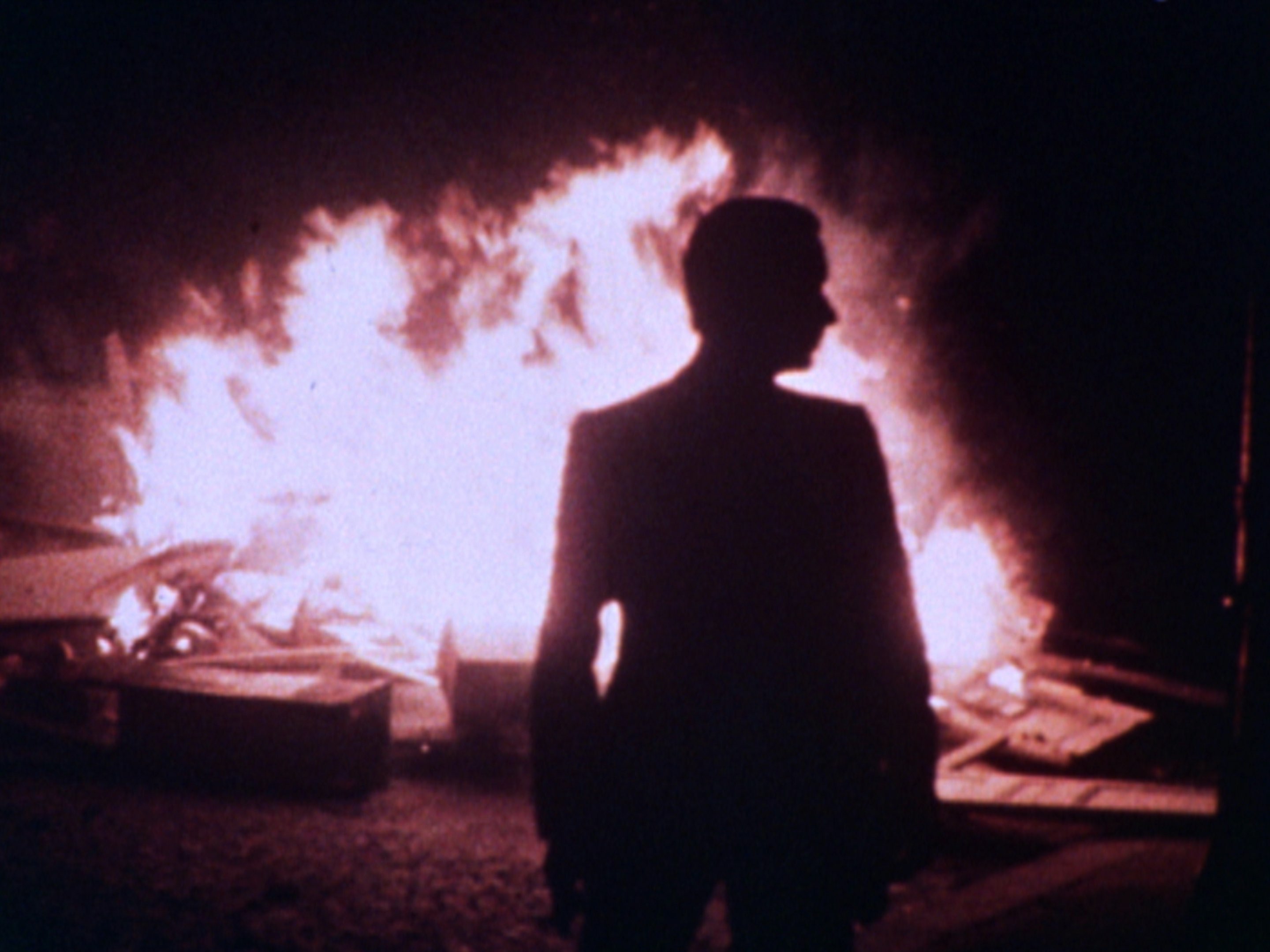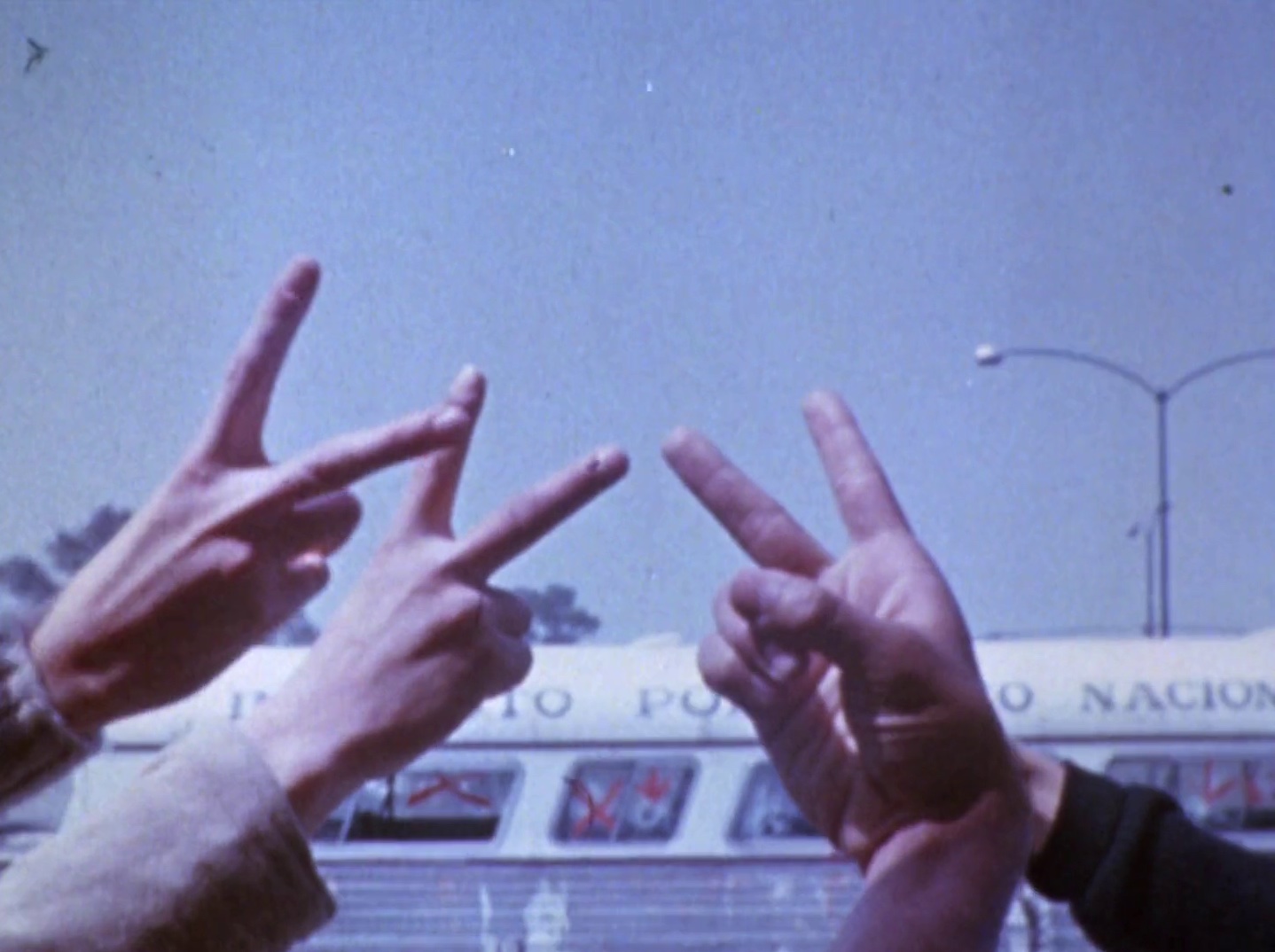A Grin without a Cat
Chris Marker’s Le fond de l’air est rouge (1977)

Chris Marker’s Le fond de l’air est rouge – or A Grin without a Cat as the title of the film is rendered in English – was produced in 1977 and serves as Marker’s reflection on the political events between 1967 and 1973 (although, to be precise, the film also contains some footage dating from the time after Salvador Allende’s suicide in September 1973).1 The documentary resists quick consumption, for it is rather long and its aim may not be immediately clear. About the length of the film, let us recall that the original version lasted not less than four hours, but was re-edited to a three-hour version by Marker himself in 1993. Besides its length, the film is quite a challenge as one has the impression, as one critic put it, of watching “a tract without a thesis.”2 My modest aim, therefore, is to argue that Marker’s film may have no thesis but that this should not prevent us from thinking with Marker about the way the Left and recent political history are knotted together, in a rather melancholic way.
As Marker relates in the book that accompanied the release of the film, the idea to make Le fond de l’air est rouge was initiated by the discovery of dozens of cases with unused material from fellow militant film makers of the collective SLON (Société pour le Lancement des Oeuvres Nouvelles [Society for the Launch of New Works]). Marker was one of the driving forces of SLON, which was founded in 1967. This material is qualified by Marker as “our repressed in images,” “notre refoulé en images.”3 These are the “unconscious” leftovers of the “conscious” films made; material left behind simply because it was considered irrelevant or even contradictory to what one wanted the militant films to tell, to show or to argue. Besides this first “unconscious” of unused material found in the archives of SLON, there is another “unconscious” Marker refers to. This second “unconscious” does not concern the oblivion of images or their absence but rather their omnipresence on television. In the many news and other informative programs, one event is almost immediately superseded by images of another event, and so on, which leads, according to Marker, not to a collective memory but to a collective immemory. Immemory is a strange word and it would be missing the point to understand it as the mere negation of memory, as oblivion, or as a form of the well-known and to some extent justified complaint – certainly even more so in our times than in Marker’s – that people lack historical knowledge. On the contrary, even if we are able to recollect the images broadcast on screen, and able to reproduce five keywords that summarize the event in quizzes or on other occasions, the word immemory suggests a proximity of these images to another French word, namely immonde, which means trash. Images usually end up as trash in their ephemeral existence as an image next to another image, and another image, et cetera. In brief, what Marker turns into the material of his film are on one hand, the images that belong to the trashcan of history, images considered as, for all sorts of reasons, irrelevant to the history or the histories one wants to tell, and on the other hand – and this is our immemory, our collective amnesia – the turning of history itself into one big trashcan of images, devoid of a meaningful connection, of a significant interplay, or an overarching narrative holding them together. These two kinds of unconscious (on one hand, the non-used images and, on the other hand, the images that float around, not so much forgotten, but abstracted or separated from their potential significance) give us a first clue to access and appreciate Marker’s film. Le fond de l’air est rouge is trying neither to fill the gaps of the official story nor to contradict it nor to create an alternative version alongside the official one via the use of obscure “unconscious” images taken from militant films of the SLON collective. Marker’s aim, it seems, is rather to awaken us from a certain slumber of indifference provoked by the abundance of images of isolated events, such as riots, strikes, protests, and civil and other wars.
At first sight, it seems that Le fond de l’air has a minimal narrative structure organizing its material, for it is divided into two parts, named, respectively, ‘Fragile Hands’ and ‘Severed Hands.’ The fragile hands refer to the raised hands and fists we have learned to identify, across different spaces and times, with forms of protest; the severed hands then, are the hands which, for a variety of reasons, stopped protesting. The idea, therefore, seems to be, that first there was May ’68 and the events that lead to it (e.g., the Vietnam war and the global indignation it provoked) and then, later, alas, this revolutionary moment got lost, vanished into the air which only retains a vague reddish colouring. The revolutionary Left imploded because of its own contradictions and internal fights – think of the disagreements, hatred even, between communists and Maoists or Trotskyists, think of Fidel Castro losing his revolutionary “innocence” when expressing solidarity with the Soviet invasion of Czechoslovakia in 1968, and so on. On top of this, the Left got tired or simply crushed by, one has to say, the brutal and ruthless right-wing governments all over the world. In that respect, the film tells the well-known story of defeat, of mourning the lost causes; eventually resulting in the melancholic loss of any cause to fight for. Yet, it would not be doing justice to the complexity of Marker’s film to consider it solely from this despondent and, in the end, too comfortable perspective. Despite the suggestion of this rise-and-decline narrative, what strikes the viewer as well is the ambiguous multitude of perspectives Marker manages to include in his documentary. As already mentioned before, the material is taken from many different sources, constituting as such a polyphony of minor and major voices. And in Marker’s editing and directing of this polyphony at certain moments his own voice resounds particularly clearly.
Take as an example the prelude to the film, which in a well-crafted montage highlights the correspondences between Eisenstein’s famous 1925 film, Battleship Potemkin, and scenes from several demonstrations in the sixties and seventies: the raised hands, the blood on the faces, the violent repression by police and military, etc. Yet, on top of the suggestion of a prolonged, historical continuity of popular uprising – from the mutiny of the battleship soldiers in 1905 to the 1917 Russian Revolution to the protest marches in the sixties – Marker includes a scene of a guide explaining how she welcomes tourists at the stairs of Odessa and tells them stories about the famous steps and the bloodshed that took place. What to think of the insertion of this footage into his film? As we know, as much as the Odessa Steps are made famous by Eisenstein’s film, the tsarist massacre of protesting men and women on those steps never took place. It is an iconic sequence from Eisenstein’s film, but in fact nothing more than a fictional scene. Does this force us to conclude that Marker adds a cynical commentary to his own suggestion of a secret affinity, of an underground current of popular protest? A cynicism that would unveil the harsh truth that there is no truth and that – even in Soviet Russia – only commodities, such as touristic excursion to the famous stairs of Odessa can be considered as somehow real? Or does Marker point in another direction and highlight the power of images beyond their representational instrumentality? Although the Odessa bloodshed never took place, doesn’t Marker suggest that despite it being a non-event, it nonetheless should be considered as nothing less than the absent cause leading to many subsequent “real” events? Do not certain images, in a twisted way, prove to be more real than any reality?
This ambiguity allows for differentiating between two kinds of melancholia present in Marker’s film. We already briefly touched upon the melancholia of the lost cause, which is the melancholia shared by many: the Left has lost, if not the war, then at least many fights against its opposing forces. Moreover, and more importantly, it has also lost its capability to mourn this loss, for what would one be mourning exactly? Soviet Russia? The cultural revolution? Cuba? Yes, what is one actually allowed to mourn, without being immediately accused of, at best, ignorant naivety and, at worst, totalitarian sympathies? And as we have learned from Freud, where the finite work of mourning is obstructed, only an infinite melancholia remains. Yet, there is also a glimpse of another, more productive melancholia discernible in Marker’s documentary. With the film’s English title in mind, let’s consider this melancholia as a problematic but not entirely stupid attachment to a grin without a cat. We seem to be left with insubstantial grins, that is: shimmering images of protest, raised hands, and clenching fists. Isolated organs, as it were, without the organizing body of a party, a movement or any other form of collectivity. As such, these images are first of all fascinating and therefore can be easily dismissed as spectacle, as cliché signs of protest with which we fake a second-hand enthusiasm. This is, moreover, an idea suggested by Marker himself, referring to the movie Scarface (Brian De Palma, 1983).4 In this film a gangster is shot dead in a bowling alley at the very moment he makes a perfect strike. In a similar way, May ’68 produced, according to Marker, the impressive sound of a bowling ball hitting the pins, but the body that had been bowling the ball was by then already put to death. So, the question Marker leaves us with may in the end be a fairly simple one: Are we the mere survivors of a dead historical sequence of protest, unable to get beyond our fascination with images of lively protest, feeding ourselves with commemorations of events belonging to a safe and distant past? Or, can those “historical grins” or, if you like, grins of history invite us to become their support and bearers, to be their catlike subjects again? Simply put, where are the cats who, as Marker reminds us in Le fond de l’air est rouge, are never to be found on the side of power?

- 1This text was first presented on the occasion of a screening of Marker’s film that was part of the Arts and Politics symposium at the Royal Institute for Theatre, Cinema & Sound (RITCS), 15 January 2018, organized by Dieter Lesage. A second presentation, 7 December 2018, was made at RITCS Cinema, directed by Wouter Hessels.
- 2Jim Hoberman, “Almost Heroes,” The Village Voice, 30 Aoril 2002.
- 3François Maspero, ed., Le fond de l’air est rouge. Textes et descriptions d’un film de Chris Marker (Paris: Maspero, 1978), 5.
- 4Quoted in Catherine Lupton, Chris Marker: Memories of the Future, (London: Reaktion Books, 2005) 112.
Images from Le fond de l’air est rouge (Chris Marker, 1977)

